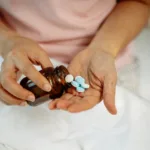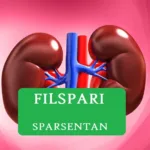Tofacitinib Citrate (Xeljanz) is an oral, small-molecule medication used to treat adults with moderate to severe active rheumatoid arthritis (RA), active psoriatic arthritis, moderate to severe ulcerative colitis, ankylosing spondylitis.
It is also indicated in children aged 2 and older with active polyarticular juvenile idiopathic arthritis. Tofacitinib prevents the activation of the Janus kinases (JAKs).
JAKs are involved in RA’s joint inflammation, which causes pain, swelling, and stiffness [Ref].
| You may also like to read: |
Uses of Tofacitinib (Xeljanz Indications)
Tofacitinib is used alone or in combination with other drugs to treat adults with the following medical conditions:
- Rheumatoid arthritis (a condition in which the body attacks its joints, resulting in swelling, loss of function, and pain),
- Ankylosing spondylitis,
- Ulcerative colitis, and
- Psoriatic arthritis who are unable to take or did not respond to one or more tumor necrosis factor (TNF) inhibitor medications.
Additionally, it is used to treat children 2 years of age and older who have:
- polyarticular juvenile idiopathic arthritis (PJIA), is a form of pediatric arthritis that affects five or more joints within the first six months of the illness and results in pain, swelling, and loss of function.
Table of Indications of Different DMARDs:
Medication | RA | Ankylosing Spondylitis | Ulcerative Colitis | Psoriatic Arthritis | Crohn’s Disease |
| Tofacitinib | ✔ | ✔ | ✔ | ✔ | ✔ |
| Adalimumab | ✔ | ✔ | ✔ | ✔ | ✔ |
| Baricitinib | ✔ | ✔ | ❌ | ✔ | ❌ |
| Vedolizumab | ❌ | ❌ | ✔ | ❌ | ✔ |
| Upadacitinib | ✔ | ✔ | ❌ | ✔ | ✔ |
| Methotrexate | ✔ | ❌ | ✔ | ✔ | ✔ |
| You may also like to read: |
Directions to use Tofacitinib
Take this drug orally once or twice daily, with or without food, as directed by your doctor.
Use a special measuring tool or spoon to precisely measure the dose if you take the drug in liquid form.
The dosage is determined by your health, how you respond to treatment, lab results, and any additional medications you might be taking.
Weight plays a role in determining a child’s dosage. For maximum effectiveness, take this medication as prescribed. Just keep in mind to take it every day at the same time or times.
| You may also like to read: |
Side effects of Tofacitinib (Xeljanz)
Tofacitinib can have side effects, just like any medication. The most common side effects of Xeljanz are headaches, nausea, upper respiratory tract infections, and diarrhea [Ref]
Stomach or intestinal issues:
Tofacitinib can occasionally induce stomach or intestinal issues. People taking nonsteroidal anti-inflammatory medications (NSAIDs) or steroids are more likely to develop these.
You should notify your doctor immediately if you detect any symptoms of stomach or intestinal problems, such as pain, changes in bowel habits, or blood in your poop.
Allergic reaction:
Tofacitinib can occasionally produce an allergic reaction characterized by rapid swelling, a rash, or shortness of breath.
If you experience these or any other severe symptoms while taking tofacitinib, you should seek medical attention immediately.
Risk of infection:
Tofacitinib can increase your risk of contracting infections since it interferes with your immune system.
These are usually not dangerous and include throat, nose, and chest infections, cold sores, urinary tract infections, and stomach disturbances.
Some patients may develop more severe infections like shingles and cellulitis, which are skin infections.
Risk of a blood clot:
Tofacitinib may raise the risk of deep vein thrombosis (blood clots in the legs). These can sometimes travel to the lungs and cause a pulmonary embolism.
If you’ve had one of these before, your risk is likely to be higher. If you have leg swelling or shortness of breath, you should seek emergency medical attention [Ref].
| You may also like to read: |
Dosage information of Tofacitinib [ref]
The dosage you should take depends on the medication’s potency. Additionally, the medical condition for which you are utilizing the medication affects the number of dosages you take daily, the period between doses, and the duration of time you take it.
Your doctor will determine the appropriate use and dosage for your child.
Xeljanz for psoriatic arthritis, rheumatoid arthritis, and ankylosing spondylitis:
For oral administration:
Xeljanz Tablets | Dosage | Timing |
| Extended-release tablets (Adults) | 11 mg | once a day, along with another medication. |
| Tablets (Adults) | 5 mg | 2 times a day along with another medicine |
Xeljanz for ulcerative colitis
For oral administration:
Xeljanz Tablets | Dosage | Timing |
| Extended-release tablets (Adults) | 22 mg once a day for 8 weeks, then 11 mg once a day | Once daily (higher doses are given for 8 weeks followed by the lower dose.
|
| Tablets (Adults) | 10 mg (twice daily for 8 weeks), followed by 5 or 10 mg twice daily | Twice daily
|
Xeljanz for pcJIA:
Oral administration for children, 2 to 17 years of age (tablets)
| weight | Dosage | Timing |
| 40 kg or more | 5 mg | 2 times a day |
| 20 to less than 40 kg | 4 mg | 2 times a day |
| 10 to less than 20 kg | 3.5 mg | 2 times a day |
Oral administration for children, 2 to 17 years of age (solution)
| Weight | Dosage | Timing |
| 40 kg or more | 5 ml | 2 times a day |
| 20 to less than 40 kg | 4 ml | 2 times a day |
| 10 to less than 20 kg | 3.5 ml | 2 times a day |
| You may also like to read: |
Mechanism of action of Tofacitinib (Xeljanz):
Tofacitinib is a Janus kinase 1 (JAK1) and Janus kinase 3 (JAK 3) inhibitor, which means it interferes with the JAK-STAT signaling system, which sends extracellular information into the cell nucleus and influences DNA transcription.
Tofacitinib suppresses STAT phosphorylation and activation by blocking JAKs. The JAK-STAT signaling system regulates cell transcription in hematopoiesis and immune cell function.
Tofacitinib acts therapeutically by blocking the JAK-STAT pathway, which reduces the inflammatory response [ref].
| You may also like to read: |



